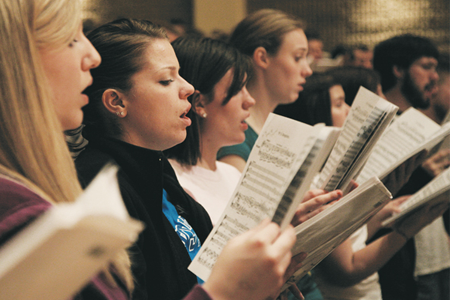Continuing our series on adolescent development, we pause to look briefly at two specific aspects of adolescent development: physical and psychological development. We will merely scratch the surface in this 2nd installment of “Who Are You? – Understanding the Adolescent.”
Again, I am simply presenting information that is generally accepted and accessible on your own. If you have further interest, I encourage you to do additional reading. There is a wealth of information out there.
Physical Development:
Generally, the rate of growth slows until adolescence, and then individuals hit another spurt in weight and height. In most cases weight increases regularly, but height experiences sudden bursts. The middle school years are marked by girls typically being taller and heavier than boys. Of course puberty begins during the middle school years (or continues to develop if begun earlier).
- For girls, this can be as early as ages 9-11 and as late as ages 12-14. (At the turn of the 20th century, it used to be ~17.)
- For boys, this can be as early as age 10 and as late as age 16.
Other physical changes include:
- Facial bones increase in hardness, density, and size.
- The nose and mouth get wider.
- Nose becomes longer and the jaw juts out further.
- Top part of face grows faster than lower part. The chin is the last feature to reach adult size. Hence, those awkward looking middle school pictures.
- Sweat glands begin to operate, producing body odor. Anyone who has spent time around 7th grade boys understands the unique odor that they produce. Additionally, this brings a struggle with acne as the sweat glands work overtime, producing excessive amounts of oil on the skin.
- Increase in strength and endurance, resulting from increase in respiratory system. (Implications for singing…)
- Increase in digestive powers, requiring greater quantities of food.
- Body hair appearing in “new” places.
- In the voice, changes for girls are slow and subtle. Changes for boys are abrupt and dramatic.
Considering all this, there seems to be a potential MINISTRY OPPORTUNITY when we think of those students who reach puberty late or early. Let me explain:
For girls: Early maturation is disadvantageous; Late maturation is advantageous.
General observations say that late maturation is better for girls, giving them more time to adjust to changes and avoid advances from boys; they avoid the time of being taller than boys. Early maturing girls may be less prepared for the oncoming changes; studies show they tend to have poorer body images. Also, they are treated older than they really are, which can encourage them to participate in “adult” behaviors, such as smoking and drinking. In addition, they are also more likely to become sexually active than “late-bloomers.”
For boys: Early maturation is advantageous; Late maturation is disadvantageous.
Early maturing boys are likely to be taller and stronger than their peers. Late maturing boys have been known to be rated lower in physical attractiveness, masculinity, and grooming than earlier maturing peers. Unfortunately, parents and teachers tend to have lower expectations for late maturing boys, and many of these young people have lower academic aspirations. These lower aspirations could reflect the lower expectations that teachers and parents have for late maturing boys.
As we encounter students that seem to be in either of these disadvantageous camps, we should be mindful of their hardships and be sensitive to potential difficulties they may experience in their peer groups. This knowledge simply helps us be better ministers to these students.
Psychological development:
The major psychological development in adolescence is the establishment of a stable sense of personal identity. It is not inborn, but rather is constructed through an ongoing effort to integrate and make sense of our experience as it pertains to us. Adolescence brings all that we have experienced and learned about ourselves together from various arenas (church, home, school, friends, family, etc.) in some cohesive manner so that we can have continuity with the past and guidance for the future.
To do this, what is required is called psychosocial moratorium, as explained by Erik Erikson. This is a period where the adolescent is free from responsibilities and demands to take on the mantle of adulthood. Students are working on their sense of personal identity when they are listening to their Ipods, texting, hanging out with friends, going to church, singing in youth choir, going to concerts, and going on choir tour.
Another MINISTRY OPPORTUNITY has presented itself: Personal identity is more difficult now to achieve than it was even a few decades ago. Identity formation/achievement requires an envelope of adult standards, values, and beliefs that the adolescent can confront and challenge in order to construct and test out his/her own standards, values, and beliefs. Adult now have fewer standards, values, and beliefs. Adolescents often struggle to find an identity without the benefit of a supportive adult envelope. The result is that many students do not reach a solid sense of identity during adolescence. We can help students reach identity formation by modeling consistent Christian standards, values, and beliefs.
In place of identity achievement, there are other options that adolescents pursue:
- Identity foreclosure – deciding on an identity early in life and holding to that decision. Individuals with exceptional talents. Sometimes, identity foreclosure is a matter of convenience or pressure. E.G., following in the family profession or taking over the family business.
- Identity moratorium – leave many options open for themselves so they do not have to choose.
- Identity diffusion – Less healthy, where students form a type of patchwork self. Identity is not cohesive or consistent, but the opposite. Who they are depends on the situation in life.
Most students achieve identity formation by the end of adolescence, but they must understand that a sense of identity grows and changes as he/she goes through life, pursues a career, becomes a parent, and participates in community affairs. Temperaments—active/passive, introverted/extroverted—continue throughout the lifecycle.
While we can only be sensitive to the physical changes that our students endure during adolescence, we can certainly be proactive in terms of their psychological development. Let’s help our students continually move forward on the path of identity formation, and may that identity always be rooted in the love, grace, and work of Jesus Christ.










